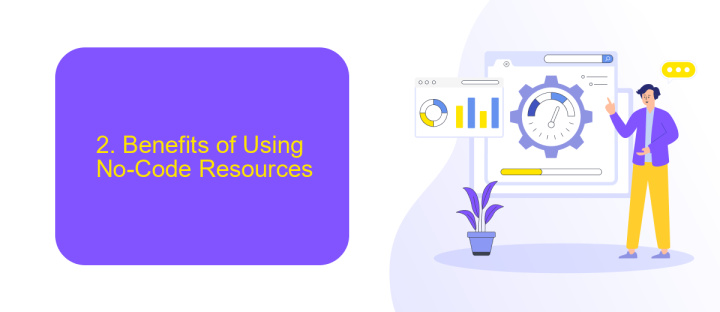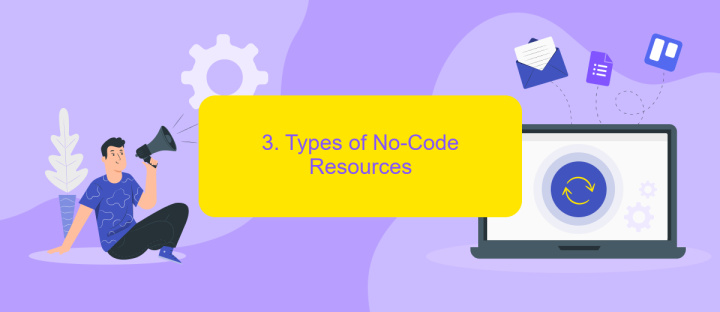No-Code Resources
In the rapidly evolving digital landscape, no-code platforms are revolutionizing the way we build and deploy applications. These tools empower individuals without traditional programming skills to create sophisticated software solutions. This article explores essential no-code resources, offering insights and guidance to help you harness the full potential of these innovative technologies. Discover how you can turn your ideas into reality without writing a single line of code.
1. No-Code Resources
No-code resources are invaluable for individuals and businesses looking to create applications, websites, and automations without extensive programming knowledge. These tools empower users to bring their ideas to life quickly and efficiently.
- Website Builders: Platforms like Wix and Squarespace allow users to design professional websites through drag-and-drop interfaces.
- App Development: Tools such as Adalo and Glide enable the creation of mobile and web apps without coding.
- Automation Tools: Services like Zapier and ApiX-Drive help integrate various applications and automate workflows, saving time and enhancing productivity.
- Database Management: Airtable and Notion offer powerful solutions for managing data and collaborating with teams.
Leveraging these no-code resources can significantly reduce development time and costs. For instance, ApiX-Drive facilitates seamless integration between different software, allowing users to automate complex tasks without writing a single line of code. This democratizes technology, making it accessible to non-developers and small businesses alike.
2. Benefits of Using No-Code Resources

No-code resources offer numerous benefits that can significantly enhance productivity and innovation. One of the primary advantages is the ease of use, allowing individuals without technical backgrounds to create and manage applications, websites, and automation workflows. This democratization of technology empowers teams to quickly prototype ideas, test them, and iterate without the need for extensive coding knowledge or hiring specialized developers. As a result, businesses can accelerate their time-to-market for new products and services, staying competitive in rapidly changing industries.
Additionally, no-code platforms often come with built-in integrations that streamline operations and enhance functionality. For example, services like ApiX-Drive enable seamless integration between various applications, allowing users to automate workflows and synchronize data across different platforms effortlessly. This not only reduces manual work but also minimizes the risk of errors, ensuring data consistency and operational efficiency. By leveraging no-code resources and tools like ApiX-Drive, organizations can achieve greater agility, reduce development costs, and focus more on strategic initiatives rather than technical challenges.
3. Types of No-Code Resources

No-code resources have become essential for individuals and businesses looking to streamline their processes without deep programming knowledge. These tools offer a wide range of functionalities, making it easier to create applications, automate workflows, and manage data efficiently.
- Website Builders: Platforms like Wix, Squarespace, and Webflow allow users to design and publish websites with drag-and-drop interfaces.
- Automation Tools: Services such as Zapier and ApiX-Drive enable seamless integration between different applications, automating repetitive tasks and improving workflow efficiency.
- App Development Platforms: Tools like Bubble and Adalo let users build fully functional mobile and web applications without writing a single line of code.
- Database Management: Airtable and Notion provide robust solutions for organizing and managing data in a user-friendly manner.
- Design Tools: Canva and Figma offer powerful design capabilities, allowing users to create professional graphics and UI designs effortlessly.
These no-code resources empower users to take control of their digital projects, reducing the dependency on technical expertise. By leveraging these tools, businesses can innovate faster and individuals can bring their ideas to life with minimal investment in time and resources.
4. Use Cases for No-Code Resources

No-code resources have revolutionized the way businesses and individuals approach digital solutions. These tools enable users to create applications, automate workflows, and integrate services without writing a single line of code. This democratization of technology has opened up numerous possibilities for various use cases.
One of the primary use cases for no-code resources is rapid prototyping. Entrepreneurs and startups can quickly bring their ideas to life, testing and iterating on them without the need for a dedicated development team. This accelerates the innovation process and reduces costs significantly.
- Automating repetitive tasks
- Building custom dashboards and reports
- Creating internal tools for team collaboration
- Setting up integrations between different software services
For instance, services like ApiX-Drive allow users to seamlessly connect various applications and automate data transfer between them. This is particularly useful for businesses looking to streamline their operations and ensure data consistency across platforms. By leveraging no-code resources, organizations can enhance their efficiency and focus on strategic growth rather than technical hurdles.
- Automate the work of an online store or landing
- Empower through integration
- Don't spend money on programmers and integrators
- Save time by automating routine tasks
5. Choosing the Right No-Code Resource
Choosing the right no-code resource can be a game-changer for your project. Start by identifying your specific needs and goals. Are you looking to build a website, automate workflows, or create an app? Different platforms excel in different areas, so it's crucial to match your requirements with the right tool. For instance, if you need to automate integrations between various applications, ApiX-Drive is a powerful option that can streamline your processes without requiring any coding knowledge.
Next, evaluate the ease of use and support offered by the platform. A user-friendly interface and comprehensive tutorials can significantly reduce your learning curve. Additionally, consider the scalability and flexibility of the tool. Will it grow with your project and adapt to changing needs? Finally, check for community support and reviews. User feedback can provide invaluable insights into the platform's reliability and performance. By carefully assessing these factors, you can select a no-code resource that best fits your project’s demands.
FAQ
What is No-Code development?
Who can benefit from No-Code tools?
Can No-Code tools handle complex automation tasks?
How do No-Code platforms ensure data security?
What are some examples of tasks that can be automated using No-Code tools?
Time is the most valuable resource in today's business realities. By eliminating the routine from work processes, you will get more opportunities to implement the most daring plans and ideas. Choose – you can continue to waste time, money and nerves on inefficient solutions, or you can use ApiX-Drive, automating work processes and achieving results with minimal investment of money, effort and human resources.


